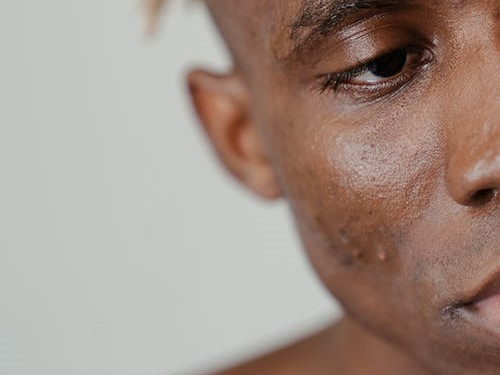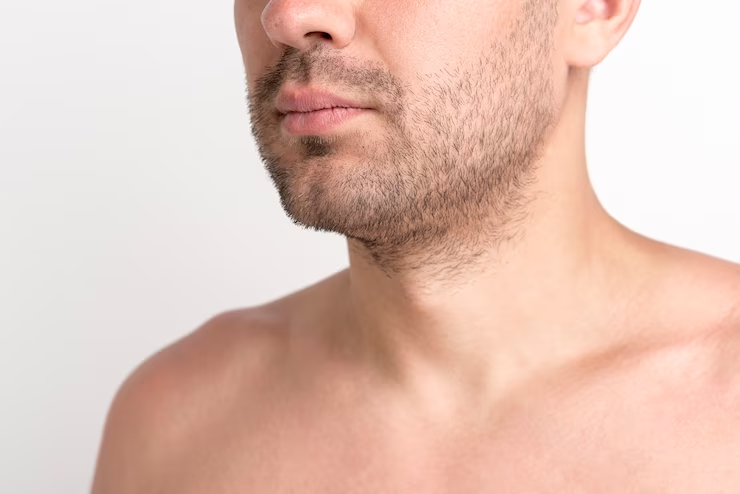
Whiteheads (scientifically known as closed comedones) are a common problem among people with oily skin. It is a type of acne. They can be caused by various factors, including clogged pores, excess oil production, or dead skin cells trapped in the pore. They appear as small white bumps (papules) frequently found on the forehead and chin of those with acne. The follicle is completely blocked by excess oil and dead cells.
Although they are generally not harmful, they can leave you feeling self-conscious and frustrated. Fortunately, several natural remedies can help you to remove whiteheads quickly and easily.
If you've ever been frustrated by whiteheads or just wanted to learn more about what causes them, you're in the right place. We've covered everything you need to know about whiteheads, including how they can be prevented and treated. We'll also give you some great tips on how to get rid of whiteheads for good–so ready, set, and clear!
What causes whiteheads?
When sebum production increases in the hair follicle along with inflammation, the debris can block the follicle and the sebaceous duct. Whiteheads occur when oil, dead skin cells, and bacteria clog pores. There are a variety of factors that can contribute to whitehead formation, including hormones, genetics, and skincare habits.

Hormones
Hormones play an important role in the development of whiteheads. During puberty and menstruation, levels of hormones like testosterone and estrogen increase. This change can cause an increase in oil production on the skin's surface and lead to clogged pores. Excessive activity of the male sex hormone - testosterone (DHT) within the skin cells, is the main cause for white heads. In addition, certain ethnicities have higher rates of sebum production than others—people with darker or black skin tend to produce more oil than lighter-skinned individuals.
Genetics
Genetics also play a role in whitehead formation because people who have family members with acne may have higher levels of certain hormones that lead to the overproduction of sebum or difficulty expelling it from the body.
Improper skincare routine
Skincare habits can contribute to whitehead formation because they affect how often you cleanse your face, what cleansers you use, and whether you moisturize after washing. Contact with certain chemicals including oily pomades and some dyes in cosmetics can lead to white heads. Whiteheads are more common in smokers than nonsmokers. Certain dietary factors, especially milk products, sugar and fats may play a role. Humidity can worsen whiteheads.
Cleansing too often will dry out your skin if it's not properly moisturized afterward; this causes dead skin cells to build up more quickly than usual, instead of being expelled naturally through sweat or shedding.
Remember to exfoliate regularly & gently remove dead skin cells from the surface of your skin. By exfoliating regularly, you will help prevent pimples from forming because it helps clear out lipids and other impurities that could otherwise clog pores.
How to get rid of whiteheads
Whiteheads are one of the most common skin conditions, which can be very frustrating. The good news is that there are some things you can do on your own to help reduce the appearance of whiteheads.
Here are some of the best ways to get rid of whiteheads:
Over-the-counter products
Benzoyl peroxide
Salicylic acid
Prescription medications
Retinoids are a form of vitamin A that help exfoliate skin cells so they don't clog pores, clear away blackheads, reduce inflammation caused by acne (papules), unblock pores (comedones), and reduce acne scarring. Retinoids are prescription drugs taken by mouth or applied topically to treat moderate to severe acne.
Azelaic acid and glycolic acid preparations can also be used for the treatment of comedones. The topical medications should be applied once or twice daily as a thin smear to the entire area which is affected. It may take several weeks or even months before improvement. Treatment must be continued long term, if not whiteheads can reappear.
Home Remedies for Whiteheads
Tea tree oil Apply the oil to your face with a cotton ball, then leave it on for 10 minutes before washing it off with warm water. You can also use tea tree oil as an acne spot treatment by dabbing a little bit on the affected area daily until the whitehead disappears.
Honey
Honey is a natural antibacterial and can help to heal wounds by killing off the bacteria that would otherwise cause infection. This natural remedy can help dry out whiteheads, so you don't need to squeeze them out manually (which can cause scarring). However, honey is not a miracle worker and won't actually reduce or eliminate scarring.
If you've been looking for a way to get rid of whiteheads, dermatologist Annie Chiu of North Redondo Beach, California, has the answer: raw honey. "Raw honey has antibacterial properties that can help clear up acne," says Chiu. "So make sure you pick up raw honey—anything processed won't have that antibacterial effect."
Aloe vera gel
Aloe vera has been studied for decades for its ability to help heal wounds, reduce inflammation and promote skin repair. It is also economical and effective, making it an excellent choice to get rid of whiteheads.
The gel can be used for minor cuts and burns immediately after they have occurred to prevent infections from occurring. It can also be applied topically on whiteheads to help clear them up faster than usual.
Face steaming
According to a study conducted by Wang, Chinese medicine steaming helps loosen the dirt and oil on your skin, which can help open up your pores and let the gunk in your pores come out more easily. It also hydrates your skin, which can help with inflammation and irritation caused by pimples.
Comedone extractor tool
You can get rid of whiteheads with a comedone extractor tool by gently squeezing and removing them from your skin—just be careful not to squeeze too hard or pull too much as it can cause scarring.
Lifestyle changes to prevent whiteheads
Keeping your hands off your face
Keep your hands off your face—touching it too much will cause a buildup of bacteria, which can lead to whiteheads forming around areas you have touched frequently (e.g., nose or chin).
Change your pillowcases regularly
Whiteheads are usually caused by dirt and oil getting trapped in your pores, so if you're sleeping on a dirty pillowcase, there's more chance of getting a whitehead. Try using a new pillowcase every few days or at least once a week. You'll be surprised how much cleaner and smoother your skin looks when you do!
Cleansing your skin
Wash your face twice daily with a mild cleanser and water. Exfoliating regularly (once a week) to remove dead skin cells is another way to help prevent whiteheads from forming. Dead skin cells are often trapped in pores and can cause clogging, leading to whiteheads. Exfoliation will help clear your pores and prevent them from clogging up by dead skin cells, which can cause whiteheads. Do it gently without damaging your skin.
Proper skincare products
Avoiding heavy or greasy skin care products is another way to prevent whiteheads from forming on your face. Choose oil free cosmetics. Heavy or greasy products may clog up your pores and make them more susceptible to getting blocked by dirt, dust, or makeup residue if you don't wash them off before bedtime.
Keep your hair clean and away from your face
If you have long hair, keep it tied back so that it doesn't rub against your face while sleeping or sitting down. This will help prevent pimples from forming around the hairline and on the forehead, where they usually occur. If you have dandruff on your scalp get it treated.
Professional Treatments for Whiteheads
Chemical peels
are most often done in a dermatologist's office or medical spa. Sometimes, they can be performed at home with prescription products from your dermatologist. They are used to improve the texture and appearance of your skin by removing damaged layers and revealing newer, healthier layers.They use a chemical solution like TCA or glycolic acid that causes new skin cells to grow faster. This removes old or damaged cells from the skin's surface to reveal healthy new cells below them.
Microdermabrasion
is another form of skin resurfacing that removes the outermost layer of dead cells from your face, neck, or chest. The procedure is often used as an alternative to chemical peels because it doesn't cause as much downtime (although there will still be redness after treatment). Microdermabrasion treatments are usually done in a doctor's office under anesthesia, so you can't feel discomfort during the procedure.For persistent whiteheads, electrocautery is another option that will be done by a dermatologist.
Extractions
are also helpful for getting rid of acne scars. Extraction is done at home or a clinic and involves squeezing out blackheads or whiteheads using a sterile needle or small scoop-like tool called an extractor tool or comedone extractor tool, depending on what type of pimple you want to be removed (blackhead vs. whitehead).Conclusion
Changing your routine is pretty easy, which will help you eliminate those pesky whiteheads once and for all. And remember: the sooner you start implementing these changes, the sooner your skin will be clear.
Although whiteheads are not dangerous, they can be irritable and unsightly. If you've tried these methods and still aren't happy with your skin, we suggest seeing a dermatologist for help—they can provide you with more specialized products, treatments, and advice that will be more effective for your unique skin type.









